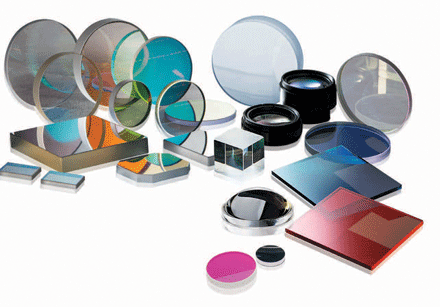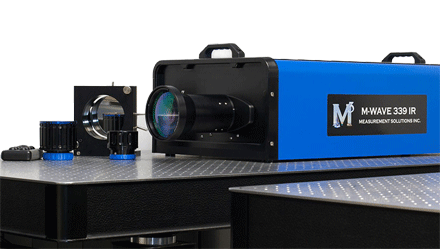|
Thursday, February 9, 2017 |
|

|
|
|

|
Moth’s Eye Inspires Design and Applications of Camera Developed by NASA
A moth's eye is the inspiration behind the technology that allows a new NASA-developed camera to create images of astronomical objects with far greater sensitivity than was previously possible. When magnified, a moth's eye contains a very fine array of small tapered cylindrical protuberances whose job is to reduce reflection. This allows the moth to absorb light making night navigation possible.
|
|
|
|
|
|
Vacuum Impurities Could Impact OLED Lifetime
While issues affecting the efficiency of OLEDs are well understood, the reasons why some OLEDs degrade and lose brightness over time have not been as easy to identify. Devices fabricated with seemingly the same procedures and conditions but by different research groups often degrade at vastly different rates, even when the initial performances are the same. One possible explanation for discrepancies in OLED lifetimes could be miniscule impurities present in the vacuum chamber during fabrication.
|
|
|
|
|
|
Photonic-Based Smart Needle Detects At-Risk Blood Vessels
A new high-tech tiny imaging probe encased with a brain biopsy needle could make brain surgery safer. Researchers from the University of Adelaide developed the medical device that will let surgeons "see" at-risk blood vessels as they insert the needle; this will potentially lessen fatal brain bleeds. The project is a collaboration with the University of Western Australia and Sir Charles Gairdner Hospital.
|
|
|
|
|
|
Solar-Powered Water Purifier Could Boost Water Security in Developing Regions
A solar still about the size of a mini-refrigerator, made from polystyrene foam and porous paper coated in carbon, could provide inexpensive, efficient access to clean water in developing regions and regions affected by natural disasters. A research team at the University at Buffalo has built a device called a “solar vapor generator,” which cleans and/or desalinates water using heat converted from sunlight.
|
|
|
|
|
|
Prism Awards 2017 Winners Crowned Read Article
Ultra-High-Speed Optical Fiber Sensor Can Monitor Structural Health in Real Time Read Article
Holographix Receives BAE Systems’ Product Innovation Award Read Article
CU Boulder Team Tracks Methane Leaks with Lasers Read Article
Material Offers Broadband, Selective Light Absorption for Use in Energy, Defense Read Article
|
|
|
|
 Thin-Film Coatings
Thin-Film Coatings
OptoSigma Corp.
For more than twenty years, OptoSigma has been at the forefront of the optical components industry, manufacturing thin-film coatings to precision standards.
Visit Website
Request Info
|
|
|
 M-Wave 339 IR Interferometer
M-Wave 339 IR Interferometer
M3 Measurement Solutions Inc.
The M-Wave 339 is a state-of-the-art Infrared Interferometer operating at 3.39 micrometers. It is the ideal instrument for testing mid-wave infrared imaging components/systems and optical material homogeneity.
Visit Website
Request Info
|
|
|
|
|
|
7th Annual Congress on Materials Research and Technology
February 20-21, 2017 - Sheraton Berlin Grand Hotel Esplanade - Berlin Germany
The 7th Annual Congress on Materials Research and Technology serves as a bridge between academia and industry, offering well-organized scientific sessions, plenary lectures, poster presentations as well as world-class exhibitions, diverse symposiums, workshops and B2B meetings. Sessions will cover various aspects of materials science, nanotechnology, biomaterials, polymers, ceramics, composites, metallurgy, materials chemistry, materials physics, energy materials, optical materials, magnetic materials, metals and alloys, smart materials and advanced materials. Professionals, industrialists and students from research areas of Materials Science and Nanotechnology will have the opportunity to share their knowledge, ideas and research experiences during interactive discussions and special sessions at the event.
|
|
|
|
An Introduction to Back Illuminated sCMOS Cameras
Tue, Feb 14, 2017 1:00 PM - 2:00 PM EST
Scientific CMOS (sCMOS) cameras are increasingly becoming detectors of choice for a range of quantitative imaging and spectroscopy applications. This webinar, presented by Princeton Instruments, will give you an overview of sCMOS camera technology and how it compares to CCD, EMCCD and ICCD low light imaging and spectroscopy detectors. Speaker Ravi Guntupalli, vice president of sales and marketing at Princeton Instruments, will discuss the key improvements of "back illuminated" sCMOS technology over previous generations; performance criteria for low light detectors; and how to select the optimum detector technology based on your application requirements. The webinar is aimed at both beginners and advanced users of various optical diagnostic techniques.
|
|
|
|
High-Speed Imaging At and Beyond the Diffraction Limit
Thu, Feb 16, 2017 1:00 PM - 2:00 PM EST
Hari Shroff, Ph.D., head of the Section on High Resolution Optical Imaging at the National Institute of Biomedical Imaging and Bioengineering (NIBIB), will speak on his lab's latest work to develop high-resolution optical methods for the study of live, dynamic, 3D samples, including efforts to improve structured illumination microscopy (SIM) and light-sheet microscopy, including new implementations of light-sheet microscopy that improve the spatial and temporal resolution of (dual-view) diSPIM.
|
|
|
|

CALL FOR ARTICLES!
Photonics Media is currently seeking technical feature articles on a variety of topics for publication in our magazines (Photonics Spectra, Industrial Photonics, BioPhotonics and EuroPhotonics). Please submit an informal 100-word abstract to Managing Editor Michael Wheeler at Michael.Wheeler@Photonics.com, or use our online submission form.
|
|
|
|
 |
|